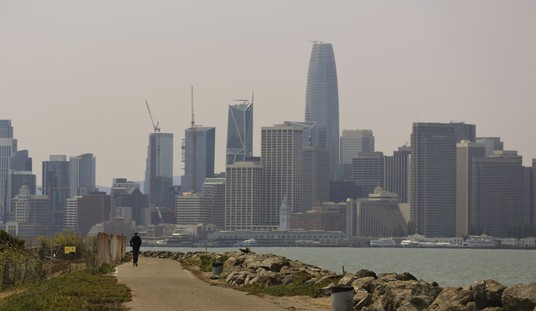Maybe, although Politico attributes it more to the short supply given the US by Johnson & Johnson. And that’s fair … to a point. The initial projection for the first delivery after an emergency-use authorization was 10 million doses, but J&J only delivered slightly more than four million. For some reason, though, almost half of those doses haven’t been injected into arms almost a month later:
Johnson & Johnson’s single-shot Covid vaccine was supposed to be the catalyst for the country’s return to normal. Instead, it’s sparking confusion and finger-pointing between the states and the Biden administration over why millions of doses are sitting unused.
Almost three weeks after the Food and Drug Administration authorized the shots, no one appears to be able to explain why immunizations are lagging. Some states are thought to be intentionally holding back shots, while others say it takes time to inoculate populations like the homebound.
Over the course of the last two weeks, senior Biden administration officials have met privately to try and determine what happened. Two senior administration officials believe states are conserving their J&J supplies until there’s enough to reach underserved communities and specific groups, like teachers or the disabled. But multiple state officials say they’re using whatever they get as soon as they get it.
What is clear is that around 2.3 million of the 4.3 million doses of the vaccine delivered have actually been administered. Between 140,000 and 200,000 doses have made it into people’s arms in recent days, according to the Centers for Disease Control.
Sound familiar? The same issue popped up when the Trump administration began distributing the Pfizer and Moderna vaccines, too. In those cases, a short initial supply got over-managed, but that had one key difference. States got confused as to whether they should hold second doses in reserve to make sure those who had first doses didn’t miss the necessary booster to complete their inoculations, or to get as many first shots in and trust that the supply would hold up for the second. For the most part, states and partnering pharmacies chose the first option, which kept millions of doses tied up but still listed as inventory.
The J&J vaccine, however, doesn’t require a second dose. It’s a single-dose shot, which means that it’s practically designed for just-in-time delivery. There is no need to reserve shots, at least medically speaking. And this is where both the states and the Biden administration appear to have jumped the rails, because medical priorities have given way to political priorities:
“You can’t distribute the vaccine equitably if there aren’t enough doses to distribute,” one senior health official said. …
Because states have final say in how their allotments are distributed, some are using the J&J vaccine on populations harder to reach for a second-shot appointment. Others are putting speed over equity and sending out the shots broadly.
This confusion over “equity” has replaced the second-dose question as a roadblock to fast deployment. At least the second-dose question related to a real medical issue, though. This looks more like rearranging deck chairs on the Titanic before getting the lifeboats into position. The value of the vaccine right now is in stopping rapid community transmission in the US, and with it the potential for the emergence of more variants that might reduce the effectiveness of all vaccines. After inoculating the most vulnerable — elderly and front-line personnel, who have mainly been covered by Pfizer and Moderna anyway — we want the succeeding vaccines to go into the arms of people who are out and about in public. That’s where the transmission risk is, and the more we worry about rationing for “equity,” the more we leave gaps to allow for that risk to continue.
The result is precisely what we see: millions of doses sitting on the sidelines while bureaucrats argue over their distribution. Had those doses gone into arms two weeks ago, two million more Americans would have become non-transmitters of the virus right now. (In fact, I’m one of the 2.3 million who did get a J&J vaccine, and my two-week mark is today.)
The good news is that the expected ramp-up of production on all lines will eventually resolve this issue, despite the screwed-up priorities of the bureaucrats. Massive production increases has resolved the second-dose issue in most states with Pfizer and Moderna, and an expected EUA for AstraZeneca might help too, as we have over 30 million doses already on hand for distribution of that vaccine. If we are to win this war on COVID-19, however, we can’t leave our weapons on the shelf, because vaccines don’t conquer pandemics — vaccinations conquer pandemics.








Join the conversation as a VIP Member